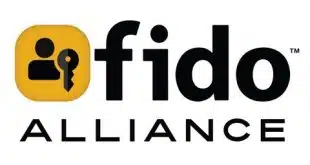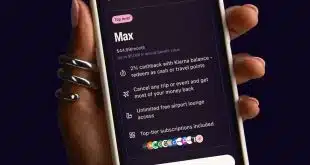After weeks of fevered anticipation, it’s finally out. Apple Inc. on Tuesday unveiled a new payments system called Apple Pay along with its iPhone 6 and large-screen iPhone 6 Plus smart phones and a snazzy new smart watch.
As predicted, the updated iPhone uses near-field communication (NFC) technology for fast contactless payments at the point of sale as well as online, and it also uses tokenization to get vulnerable payment card numbers out of the transaction process. Apple Pay’s supporting cast includes the Visa Inc., MasterCard Inc., and American Express Co. payment networks as well as 11 large credit card issuers representing 83% of U.S. charge volume, Apple chief executive Tim Cook said at the unveiling.
Apple Pay also has bevy of national merchant acceptors, including Walgreen Co.’s Duane Reade chain, McDonald’s, and Disney as well as its own retail stores. But absent from the initial list, with the exception of Target Corp.’s e-commerce site, are the big merchants that support the nascent retailer-controlled Merchant Customer Exchange mobile-payment system, recently rebranded as CurrentC, including Wal-Mart Stores Inc. and Best Buy Co. MCX reportedly requires exclusivity from its merchant members in their use of mobile wallets, and it’s unclear whether Apple’s huge customer base could force a change in that policy.
MCX refuses to comment on Apple Pay, citing press of business. Another rival mobile-wallet provider, Softcard, did not reply to a request for comment. Known as Isis until last week, Softcard is controlled by major mobile carriers.
In addition to the NFC antenna, the new iPhones have a secure element that stores the holder’s payment information, Apple senior vice president of Internet software and services Eddy Cue said at the event in Cupertino, Calif. The data are encrypted. The system will automatically use the card credentials the customer has on file with Apple’s iTunes service, which has 800 million users, as the default payment account. Users can add more cards by taking pictures of them with the phone’s camera; Apple then verifies the account data with the issuers and places the cards’ digital renderings in its existing Passbook wallet app.
Cook and Cue emphasized the ease with which iPhone owners will use Apple Pay. Opening an app is not required, all the user has to do is hold the Touch ID button on the screen to authenticate herself by fingerprint while tapping the iPhone at a terminal in one of the 220,000 U.S. merchant locations that can accept contactless payments. The phone generates a small vibration and beep to confirm the transaction. Merchants also can integrate Apple Pay into their own mobile checkout systems. The two executives repeatedly claimed the system is highly secure—a suddenly sensitive issue in the wake of revelations last week that nude photos of celebrities stored on Apple’s iCloud service had been stolen.
In that vein, Cue played up tokenization and related security measures to differentiate Apple’s system from conventional magnetic-stripe cards. “When you add a new credit card, we don’t store the credit card number and we don’t give it to the merchant,” he said. “We create a device-only account number and we store it safely in the secure element. And each time you pay we use a one-time payment number along with a dynamic security code so you no longer have the static code on the back of your plastic card.”
Cook also addressed the issue of why mobile wallets have mostly been a dud with consumers (the major exception, not noted by Cook, being that of PayPal Inc.). “Most people that have worked on this have started by focusing on creating a business model that was centered around their self interest instead of focusing on the user experience,” he said. “We love this kind of problem,” Cook continued, calling Apple Pay an “entirely new payment process.”
Apple’s initial merchant partners also include Macy’s and Bloomingdales, Staples, Subway, Starbucks, Whole Foods, Groupon, Uber, Panera, Major League Baseball’s MLB at Bat, OpenTable and Tickets.com.
The launch card issuers, with more coming, are Bank of America, JPMorgan Chase, Citigroup, American Express, Wells Fargo, Capital One, U.S. Bank, Navy Federal Credit Union, USAA, PNC, and Barclays.
Scott Rau, director of mobile payments at JPMorgan Chase’s credit card unit, says Apple Pay “looks pretty exciting and innovative,” though he would not predict how many Chase cardholders are likely to load their credentials into it. Rau says Apple’s use of tokenization will advance payment security, though tokenization is just one part of a secure payment system. “It’s a combination of the tumblers and a lock,” he says. “There’s no magic, single answer.”
Payments consultant Steve Mott of Stamford, Conn.-based BetterBuyDesign tells Digital Transactions News by e-mail that Apple’s combination of NFC with one-time tokens and Touch ID “is substantively better” than the static tokens and host-card emulation (a modified form of NFC) that the payment card networks and their EMVCo standards body are focused on currently. Still, given the iCloud flap, the notion of reinventing payments, as Cook promised, “makes a grizzled payments veteran shudder a bit,” he says. “That’s proved hard for everyone to master.”





